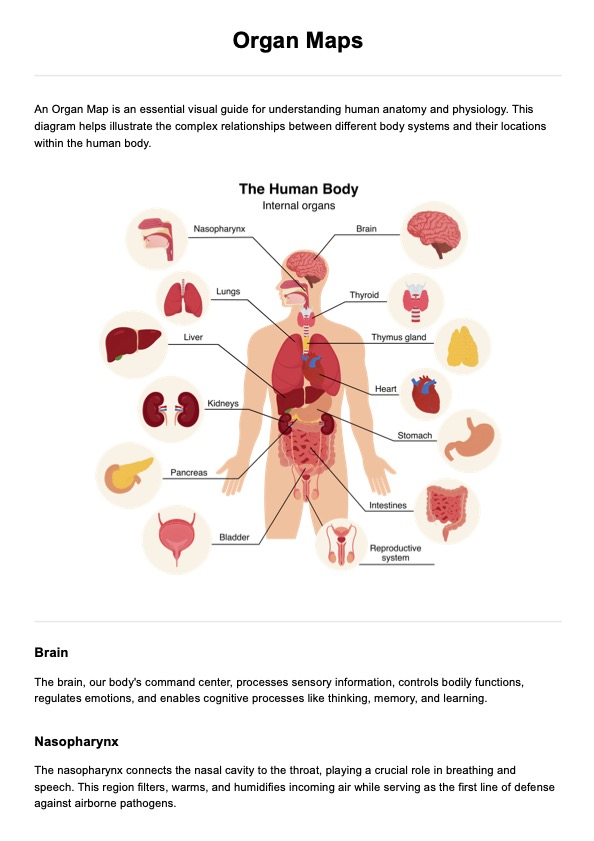The human body consists of 12 major organs: the brain, heart, lungs, liver, kidneys, stomach, intestines, pancreas, spleen, gallbladder, skin, and bladder. These organs play a vital role in maintaining bodily functions and overall health.

Organ Maps
Download our Organ Map handout as a visual guide and educational resource for anatomy and physiology.
Organ Maps Template
Commonly asked questions
There are 11 organ systems in humans: the integumentary system, skeletal system, muscular system, nervous system, endocrine system, cardiovascular system, lymphatic system, respiratory system, digestive system, urinary system, and reproductive system (which includes both male and female reproductive systems). These systems work together to perform complex functions necessary for survival and homeostasis.
The easiest organ to live without is typically the spleen. While the spleen filters blood and supports the immune system, individuals can lead normal lives without it as other organs and systems can compensate for its absence.
EHR and practice management software
Get started for free
*No credit card required
Free
$0/usd
Unlimited clients
Telehealth
1GB of storage
Client portal text
Automated billing and online payments











